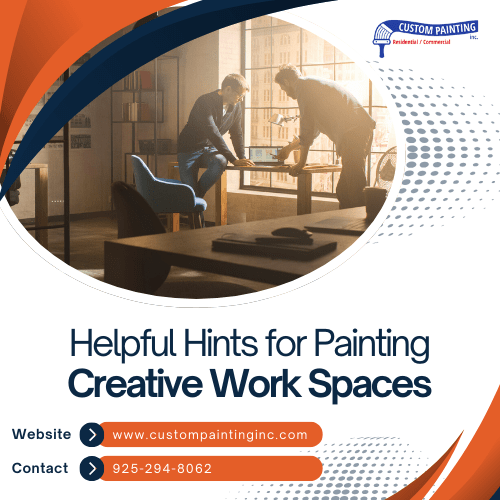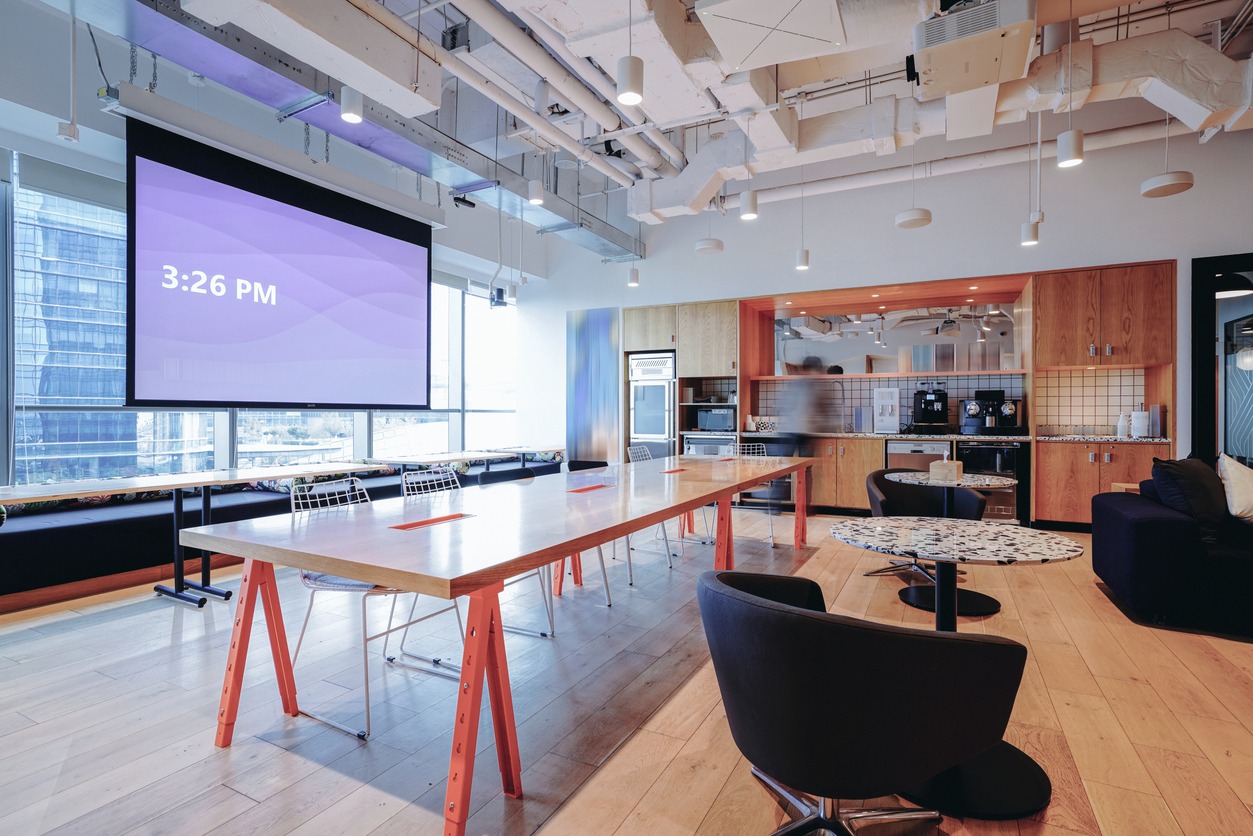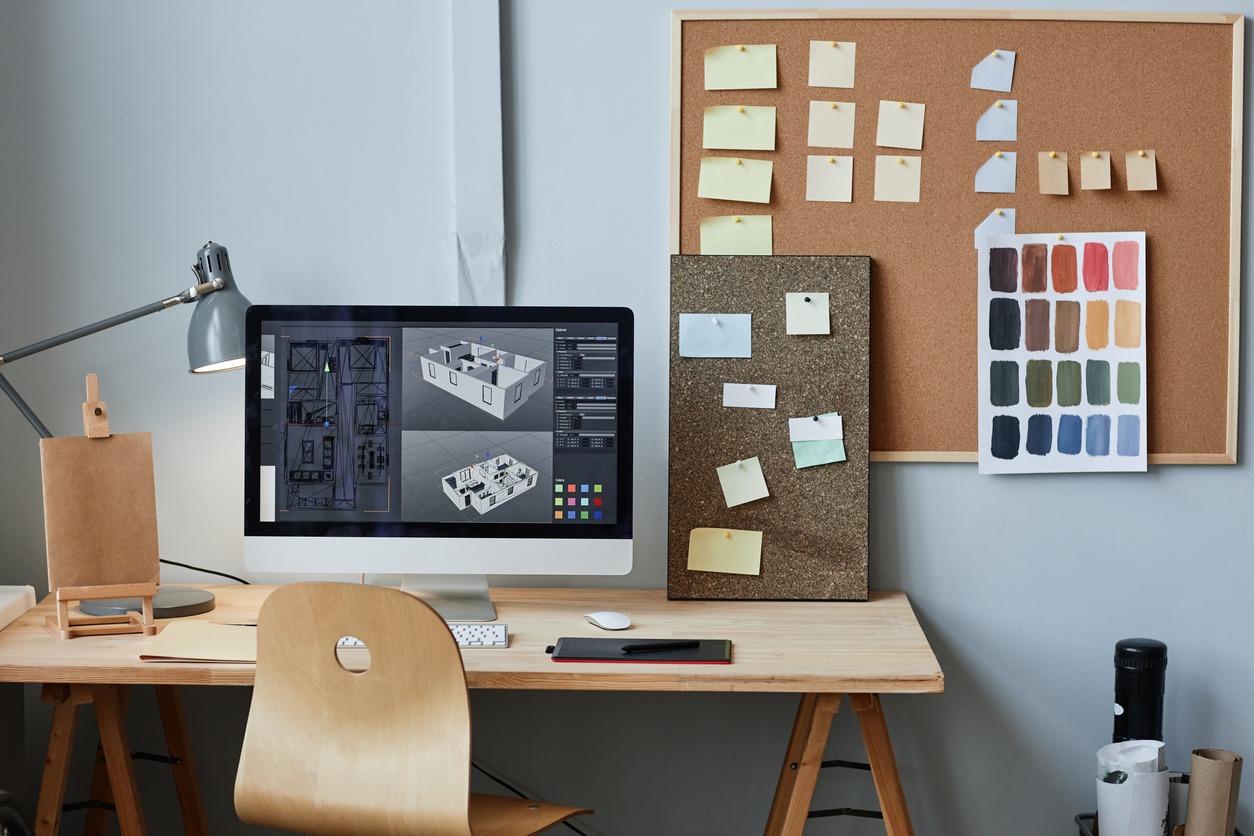Do you work at a creative office space or own a private studio? Thus, you want to transform it into a space that fuels your creativity and encourages productivity without making a distraction or limiting your imagination.
The environment fosters creativity by influencing mood, energy, and focus. Well-designed spaces can stimulate innovative thinking, while poorly designed ones may hinder it. Color and design are crucial elements in inspiring creativity; bright, energizing colors like yellow or red can boost creative thinking, while calming shades like blue or green support focus and reduce stress.
Creative workspaces require careful planning in terms of color and paint choices to strike the right balance between stimulation and relaxation, allowing individuals to remain productive without feeling overwhelmed.
Understanding the needs of a creative workspace
A creative workspace should be designed with both flexibility and functionality in mind to support a range of activities. Multi-use spaces can accommodate various tasks, from collaborative brainstorming to focused individual work. This adaptability encourages productivity and creativity, allowing the space to be reconfigured as needed for different projects or team dynamics.
Inspiration through color: Colors play a crucial role in shaping the atmosphere of a creative environment. For example:
- Bright colors like yellows and oranges can stimulate energy and collaboration, making them ideal for communal areas.
- Calming hues like blues and greens encourage focus and relaxation, suitable for more technical or detailed work.
- Bold accents like red or purple can be used to energize artistic tasks or inspire innovation.
The type of work you do also influences color choices. Highly collaborative tasks may benefit from energizing colors, while technical work might require cooler tones to maintain focus. Artistic spaces often thrive on a balance of bold and neutral colors to foster inspiration and concentration.
Choosing colors that inspire creativity
Choosing colors that inspire creativity involves understanding how different hues impact energy and focus.
- Yellow is optimistic and energizing, boosting creativity and bright ideas.
- Blue promotes focus and calm while also encouraging deep, innovative thinking.
- Green provides balance and refreshment, perfect for brainstorming sessions.
- Orange is fun and energizing, ideal for active, collaborative spaces.
- Purple symbolizes creativity and luxury, suitable for high-end design environments.
- Bright neutrals like white and light gray pair well with bold accents to keep workspaces clean and modern without feeling overwhelming.
Balancing these bright colors with neutrals helps avoid overstimulation while fostering a productive and creative atmosphere.
Incorporating accent walls
In creative workspaces, accent walls work well because they add visual interest and help define zones without overwhelming the entire space.
Bold colors or murals can serve as focal points, energizing the room or highlighting specific areas for brainstorming, collaboration, or inspiration.
Choosing the right wall for an accent is key—typically, it’s best to select a wall that naturally draws attention, such as the one behind a desk or near a seating area, ensuring it enhances the room’s function without overpowering the overall design.
Creating zones within creative workspaces
Creating distinct zones within a creative workspace using color can enhance both functionality and atmosphere. Here’s how you can approach it:
1. Using color to designate zones:
By assigning specific colors to different zones, you can visually communicate the purpose of each area. For example, collaboration zones could feature bright and energizing colors, while quiet, focused areas might use calming hues.
2. Examples of color combinations:
- Collaboration zones: Bright yellows or oranges can stimulate energy and creativity.
- Focus or private areas: Muted blues and greens promote calm and concentration, creating a more focused environment.
- Break areas: Soft greens or pastel tones help create a relaxing and refreshing space.
3. Transitioning between zones:
To ensure smooth transitions, use neutral tones or accent colors to bridge the spaces. For example, you might use a neutral gray to complement the vibrant and muted zones, allowing for a cohesive flow while maintaining clear functional distinctions.
This approach helps differentiate areas for specific tasks while maintaining a unified design throughout the workspace.
Maximizing natural light and color choice
Maximizing natural light in creative spaces enhances energy, focus, and productivity by creating an open and uplifting environment. Lighter colors like white, soft neutrals, and pastels reflect natural light, making spaces feel larger and brighter.
Under artificial light, colors may appear warmer or cooler depending on the light source. Spaces with less natural light benefit from lighter shades to amplify brightness, while well-lit areas can handle bold hues, which add depth and character without overwhelming the space. Balancing light and color ensures a harmonious and functional workspace.
Incorporating textures and finishes
Incorporating textures and finishes into creative spaces can significantly elevate the ambiance and functionality. Exploring beyond flat paint, textured finishes like chalkboard paint, metallics, or matte finishes add depth and dimension, stimulating creativity by engaging different senses.
Chalkboard or dry-erase paints are practical options for collaborative environments, turning walls into interactive canvases for brainstorming and idea-sharing. These surfaces encourage hands-on creativity and flexibility in design.
When choosing finishes, especially for high-traffic areas, balance aesthetics with durability. Matte finishes can hide imperfections, while more durable options like satin or semi-gloss are ideal for areas that need frequent cleaning. This combination ensures the space remains functional while enhancing its creative energy.
Using art and murals as part of the design
Using art and murals in creative workspaces is significant in inspiring creativity and can be a powerful tool for communicating company values.
Murals create a dynamic visual impact, energizing the environment while reflecting the organization’s culture or mission. Collaborating with local artists or in-house designers allows for one-of-a-kind features that bring authenticity and personality to the space.
In addition, large-scale artwork can be carefully integrated with the overall color scheme to ensure a cohesive and artistic atmosphere, blending creativity with function. This approach enhances the workspace’s visual identity while promoting engagement.
Trends in creative workspace design
Creative workspace design trends currently emphasize:
- Biophilic design: Integrating nature through natural colors (greens, browns, soft blues) and elements like plants to boost well-being and creativity.
- Minimalism: Clean, uncluttered spaces with simple lines complemented by strategic pops of color to enhance creativity while maintaining focus.
- Future-proofing: Ensuring flexibility and adaptability by incorporating timeless design elements and modular furniture that can evolve with changing needs, balancing trendiness with long-term functionality.
These trends focus on creating inspiring, functional environments that support well-being and adaptability.
Practical considerations for painting creative workspaces
When painting creative workspaces, using high-quality, durable paints is essential to withstand daily activity and maintain a fresh look.
Eco-friendly, low-VOC paints help ensure better air quality for maintaining a healthy, creative atmosphere.
Scheduling the painting process around office hours minimizes disruption, allowing the workspace to remain functional.
Consulting a professional painter ensures your vision is executed correctly with the correct techniques, color choices, and finishes, enhancing the overall design and functionality of the space.
Conclusion
When designing a creative workspace, choose inspiring colors that foster creativity and productivity. Thoughtfully creating zones for different activities, using accent walls to define areas, and incorporating textures for added dimension lets you develop a dynamic environment that stimulates innovation.
Business owners should consider how office design can influence creativity and collaboration, ultimately shaping their team’s success. Call Custom Painting, Inc. at 925-294-8062 or message us on our contact page for expert advice and professional painting services to bring your creative workspace to life!



